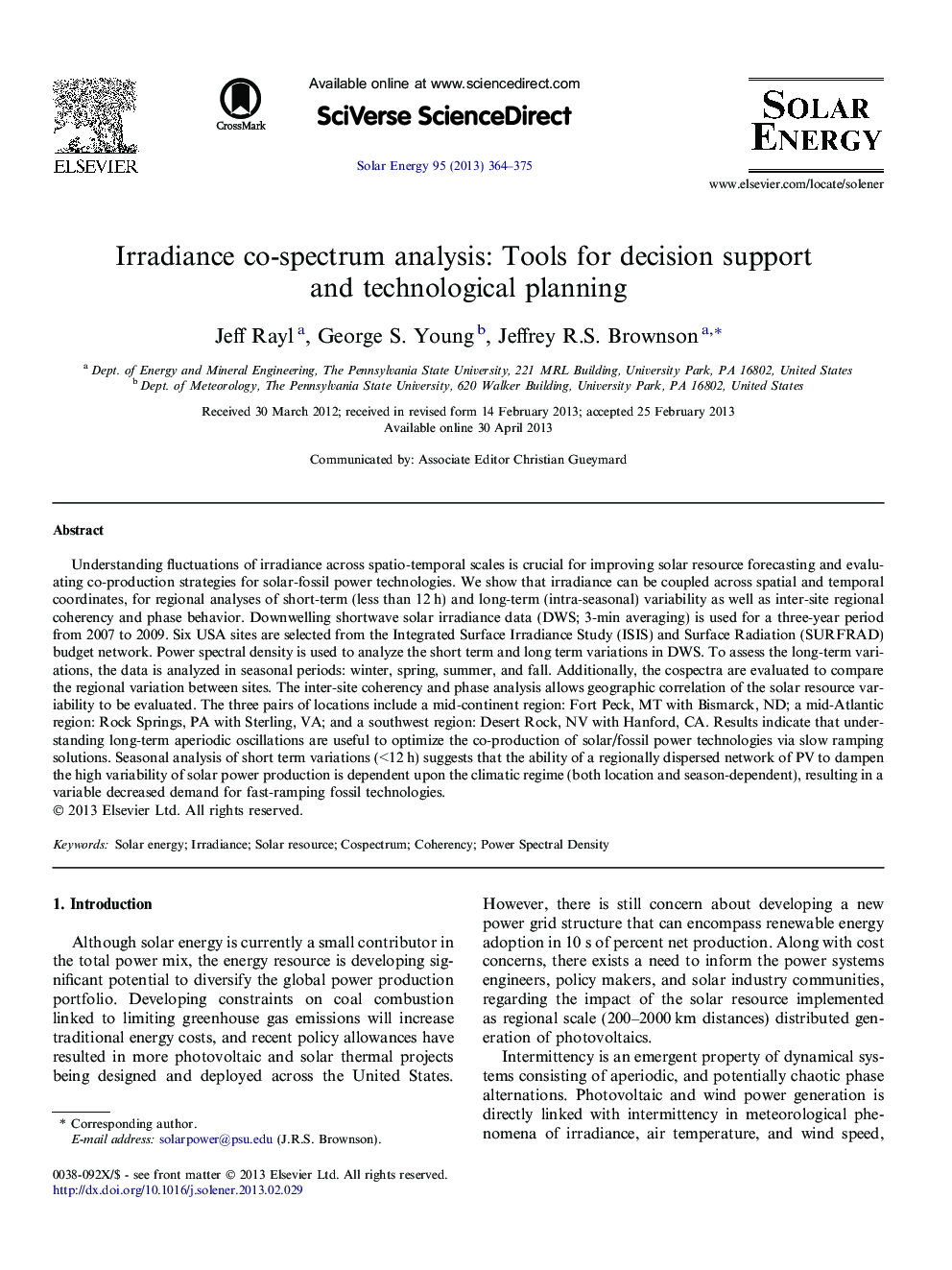| Article ID | Journal | Published Year | Pages | File Type |
|---|---|---|---|---|
| 1550600 | Solar Energy | 2013 | 12 Pages |
Abstract
Understanding fluctuations of irradiance across spatio-temporal scales is crucial for improving solar resource forecasting and evaluating co-production strategies for solar-fossil power technologies. We show that irradiance can be coupled across spatial and temporal coordinates, for regional analyses of short-term (less than 12Â h) and long-term (intra-seasonal) variability as well as inter-site regional coherency and phase behavior. Downwelling shortwave solar irradiance data (DWS; 3-min averaging) is used for a three-year period from 2007 to 2009. Six USA sites are selected from the Integrated Surface Irradiance Study (ISIS) and Surface Radiation (SURFRAD) budget network. Power spectral density is used to analyze the short term and long term variations in DWS. To assess the long-term variations, the data is analyzed in seasonal periods: winter, spring, summer, and fall. Additionally, the cospectra are evaluated to compare the regional variation between sites. The inter-site coherency and phase analysis allows geographic correlation of the solar resource variability to be evaluated. The three pairs of locations include a mid-continent region: Fort Peck, MT with Bismarck, ND; a mid-Atlantic region: Rock Springs, PA with Sterling, VA; and a southwest region: Desert Rock, NV with Hanford, CA. Results indicate that understanding long-term aperiodic oscillations are useful to optimize the co-production of solar/fossil power technologies via slow ramping solutions. Seasonal analysis of short term variations (<12Â h) suggests that the ability of a regionally dispersed network of PV to dampen the high variability of solar power production is dependent upon the climatic regime (both location and season-dependent), resulting in a variable decreased demand for fast-ramping fossil technologies.
Related Topics
Physical Sciences and Engineering
Energy
Renewable Energy, Sustainability and the Environment
Authors
Jeff Rayl, George S. Young, Jeffrey R.S. Brownson,
